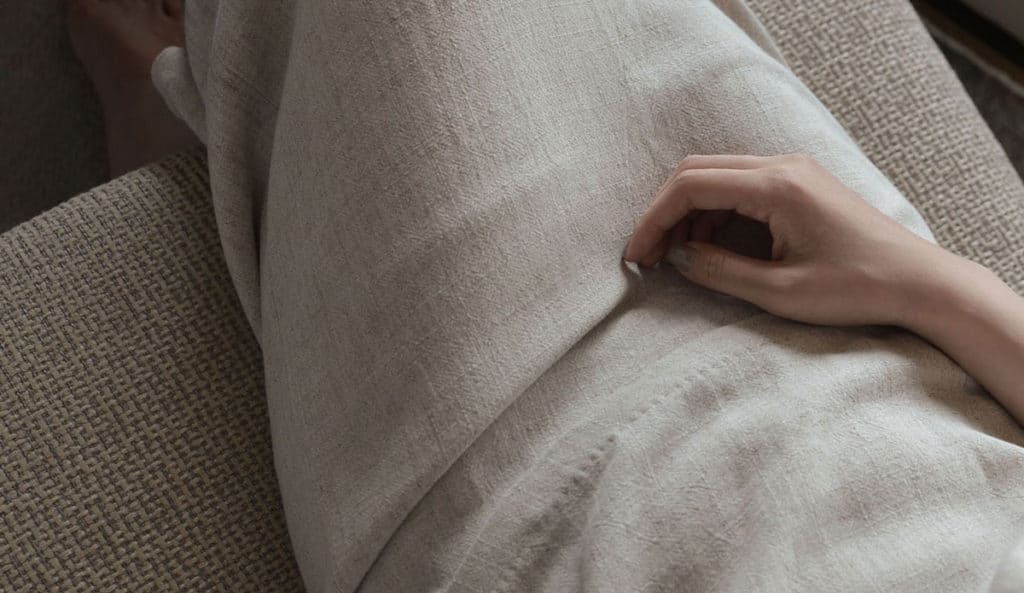Writing by Wen H., Photo by Unsplash
July 22, 2022
Summer is the best time to enjoy the outdoors and absorb vitamin D, relative to winter sun-deficient Brits. However, a report from the Met Office shows that “Under a very high emissions scenario we could see temperatures exceeding 40 degrees as frequently as every three years by the end of the century in the UK. Reducing carbon emissions will help to reduce the frequency, but we will still continue to see some occurrences of temperatures exceeding 40°C and the UK will need to adapt to these extreme events.”(Met Office, Jul 2022). In order to adapt to the extreme summer heatwave, selecting the best breathable clothing materials to significantly elevates our comfort in hot weather can be a challenge. We always recommend being prepared to avoid heat stroke.
Because of the convenient dissemination of information on the Internet, we believe that you should have the basic knowledge of fabrics for summer, yet among the fabrics, which summer fabrics have both eco-friendly and breathable-feeling features? Based on our research, we make the following arrangement.

Image via Zhouxing Lu
Bamboo Fabric & Sustainability
The best sports material to keep you cool is made of bamboo fibres, the analysis was carried out in Icewear and collaborated with a mechanical engineer specializing in thermal and energy.

Image via Icewear
Except for the cooler-feeling feature, the Bamboo fabric is a sustainable material that people often praise, because it requires minimal pesticides and absorbs a large amount of carbon dioxide. The towels, underwear, shirts, and bed sheets made of bamboo fabrics embrace the characteristics of being durable, breathable, soft and smooth, etc. Some designers select it as an alternative option to service cotton sometimes.
Yet, the fabric-making process can be toxic to the planet, involving the heavy use of harmful chemicals such as carbon disulfide and sulfuric acid. Nowadays, experts recommend that the closed-loop method is the most environmentally friendly way to obtain bamboo fabrics. The process does not use harmful chemicals such as carbon disulfide. Also, the solvent is captured and reused in this closed-loop process, which brings better environmental impact. Bamboo fabric can be a sustainable fabric option as long as the brand is transparent about cultivation and processing, as suggested by Good On You.
Benefits of Bamboo Fabric
– Requires minimal pesticides
– Easily organically grown
– Soft touching and moisture wicking
Drawbacks of Bamboo Fabric
-Potential water pollution, involving carbon disulfide
-Shrinkage at a faster rate compared to other materials.
-Easily wrinkles and pilling

Image via Bree Anne on Unsplash
Lyocell Fabric & Sustainability
If you’ve been shopping for eco-friendly clothing, you should have seen lyocell on the care label. Tencel is a brand name for a type of lyocell. The producers obtain lyocell fiber from the pulp of eucalyptus, birch or oak trees. The closed-loop system for converting wood pulp to cellulose fibers is an environmentally friendly manufacturing process with a minimal carbon footprint. Thus, the Tencel line is often praised for its sustainable production process. Lyocell Fabric’s appealing properties are breathability, comfort, and softness (Jennifer 2021).
Taking care of your lyocell clothing
Lyocell is a delicate material, so best laundry on a gentle cycle in the machine or by hand, with mild detergent and cold water. Usually, new lyocell garments shrink a little after the first wash. Advice to use a warm temperature for ironing.
Please follow the instruction on the care label as their suggestions.
The manufacturing processes can vary.
Benefits of Lyocell Fabric
-Moisture wicking
-Biodegradable: Lyocell is biodegradable and compostable.
-Durable: longer time using and less prone to wrinkling than cotton.
-Friendly using for Sensitive Skin: A study shows that people with Atopic Dermatitis (AD) preferred lyocell to cotton, and also, have lower mean itching levels.
-Lyocell are silkier and great for shirts and underwear
Drawbacks of Lyocell Fabric
-Higher price
-Low Dye Absorbency: It is difficult for dyes to bind to it during manufacturing.

Hemp Fabric & Sustainability
hemp fabric is known to be the fabric of choice for summer, keeping you cooler in summer and even protecting you from UV rays. It is also considered by many fashion brands to be one of the most sustainable apparel fabrics. The reason for being the priority for environmentally friendly materials is that less water usage is required to grow from the start of cultivation. One study showed that cotton requires 9,758 kilograms of water per kilogram, but Hemp requires less water usage than cotton, being 3,401 kilograms of water per kilogram (Cherrett, 2005). In addition, the cultivation of organic hemp fabrics can replenish soil nutrients and help improve soil health. Its crops absorb more carbon from the atmosphere than they release. However, hemp can feel rough on the touch, manufacturers sometimes combine it with synthetic materials. Therefore, the biodegradability of the hemp fabric blend may be lower than that of organic hemp material. Good On You says hemp is a better option than traditional cotton and similar fabrics, but for sustainability, look for GOTS-certified options.
Benefits of Hemp Fabric
-Durability: hemp is known for its durability. It gets softer with each laundering without losing its durability.
-Breathability: perfect for summer wear or in humid climates.
-Blocking UV rays: hemp fabric provides 50% more UV blocking effect than that of polyester (Lee, Sangeun, 2017)
-Suitable for sensitive skin.
Drawbacks of Hemp Fabric
-Wrinkles easily: this fabric requires extra care when laundering and drying.
-hemp is not as soft as cotton.
Organic-Linen Fabric & Sustainability
According to a study by a mechanical engineer specializing in heat and energy, the properties of organic linen fabric make heat flow out the body, helping us stay cool. (Icewear)


Image via Icewear
Linen is a natural fiber, similar to organic cotton, with breathable, light-weight, and moisture-absorbing properties. Although linen is considered an environmentally friendly material, its manufacturing process determines the sustainability of the final product. Better to shop the items which are certified by GOTS Certification, which demonstrates that such fabrics and products are free of pesticides and harmful dyes and follow an eco-friendly process.
How sustainable is organic linen fabric in agriculture? Linen fabric is a light and strong fabric. It is fully biodegradable when in its natural form and untreated with dyes. Linen protects the land and requires minimal water to grow. The rain is enough to support its growth, which means it is friendly to water resources, without requiring irrigation. Linen captures carbon dioxide from the environment, one hectare of Linen can retain 3.7 tons of carbon dioxide per year. (Jennifer 2021)
Benefits of Organic Linen Fabric
– Has heat-regulating features and withstands high temperatures.
– Moisture-Absorbing: having a strong ability to absorb moisture
-Durability: getting softer with every laundering.
Drawbacks of Organic Linen Fabric
– Time-consuming production: Converting the fibers to fabrics requires multiple manual methods
– High-Price
– Wrinkles easily: it requires more ironing.
Image via Thom Bradley on Unsplash
Organic Cotton Fabric & Sustainability
Cotton has often been dubbed “the thirsty crop”. It’s not an eco-friendly producing process because not only highly pesticide usage, but also is often associated with child slavery and forced labour. In the process of turning cotton balls into soft or shiny coloured garments, numerous chemical processes are used to treat, dye, print and finish. However, organic cotton solves many of the problems of conventional cotton. Many sustainable experts recommend buying organic cotton products which be certified by Global Organic Textile Standard (GOTS) and Fair Trade certification to ensure the eco-friendly making process and workers are treated well along the supply chain. (Hannah, 2022)
Benefits of Organic Cotton Fabric
– Organic cotton products generally have a longer lifespan.
– Soft, lightweight and breathable material
– Biodegradability
– Growth with fewer pesticides, so communities can live relatively healthy lives and have access to clean water and food supplies.
Drawbacks of Conventional Cotton Fabric
– Conventional cotton production requires a lot of pesticides.
– Pesticides infect local waterways, damage the environment and harm animals.
– Hiring children and forced labour.


Source and References:
– Cherrett, N., Barrett, J., Clemett, A., Chadwick, M. and Chadwick, M. J. (2005). Ecological Footprint and Water Analysis of Cotton, Hemp and Polyester. Report prepared for and reviewed by BioRegional Development Group and World Wide Fund for Nature – Cymru. Stockholm Environment Institute.
-Isobella Wolfe, Good on you (Jan 2021). What Are You Wearing? The Ultimate Clothing Material Guide
– Icewear (no date). Best Clothes for Summer: Clothes That Keep You Cool in Hot Weather.
https://www.icewear.is/us/blog/2021/05/19/best-clothes-for-summer-that-keep-you-cool/
-Jennifer Okafor, BSc. TRVST (Apr. 2021). Fabric and Sustainability.
https://www.trvst.world/sustainable-living/fashion/bamboo-fabric-sustainability/
– Lee, Sangeun & Kim, Chan-Mi & Lee, Jang & Lee, Kyungho & Cho, Kyoung & Kim, Eun-Soo. (2017). Effect of hemp fiber on UVB-induced epidermal cell proliferation and PCNA expression. Genes & Genomics. 39. 10.1007/s13258-017-0533-8.
-Met Office (Jul 2022). A milestone in UK climate history. https://www.metoffice.gov.uk/about-us/press-office/news/weather-and-climate/2022/july-heat-review
– Transformers foundation (2021), Cotton: A Case Study in Misinformation, A Report on Building Critical Data Consumption in Fashion.
– Hannah McFarlane, Good On You (Jan 2022), Material Guide: How Sustainable and Ethical Is Organic Cotton?

